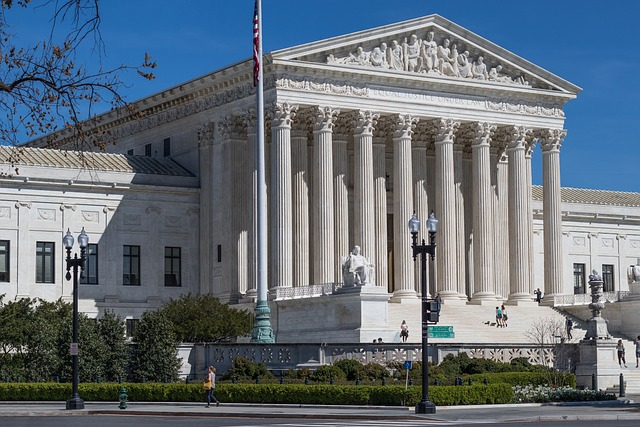Navigating the complex world of investing can often feel like trying to find your way through a maze. One key challenge investors face is the impact of deceptive information on stock prices, known as the fraud-on-the-market theory.
If you believe you have been a victim of investment fraud, don’t wait to take action. Contact the experienced investment fraud lawyers at Haselkorn & Thibaut for a free consultation. Let us help you protect your rights and recover your losses.
This blog post will delve into what this theory entails, how it affects your investments and ways to understand its implications for better decision-making in financial markets. Let’s dive into an analysis that demystifies these concepts, and focus on making them accessible and clear.
Key Takeaways
Table of Contents
The Fraud on the Market Theory means that when a company lies about its health, it affects stock prices because those prices reflect all public info. This helps investors sue in class action lawsuits if they lose money due to these lies.
Stock markets work by selling shares of companies to raise money, and these prices change based on new information. An efficient market is one where this information quickly changes stock prices. The theory uses this idea to help prove that all investors were tricked by any lie.
Courts have used the theory since the 1960s to make it easier for groups of investors to sue together without proving each person knew the lie. Key court cases like Basic Inc. v. Levinson have shaped how this theory works today.
Some people argue against this theory because they worry it’s misused in courts and might not always show how markets really work or whether investors were relying on lies.
Even with debates, this theory remains a major tool for dealing with fraud in investing, leading to ongoing discussions on how best to protect investors and keep markets fair.
Understanding the Fraud in the Market Theory
The Fraud on the Market Theory is a legal concept used in securities fraud cases.
It presumes that all publicly available information about a security is reflected in its market price, thus affecting investor decisions.
Definition of the theory
Fraud on the Market Theory suggests that stock prices reflect all available material information. If someone lies about a company’s health, it changes the stock price. Investors then buy or sell stocks based on this misleading info, which isn’t fair to them.
This theory is key in securities fraud litigation. It helps when many investors are hurt by false statements but can’t prove they all relied on those lies individually. Instead, they argue that the lie impacted everyone by changing the stock price in an efficient market.
This makes it easier for groups of investors to sue together in class action lawsuits.
Basics of securities markets and information availability
Transitioning from the concept of Fraud on the Market Theory, it is vital to comprehend the basics of securities markets and information availability. Stock markets are where securities, such as stocks and bonds, are traded, bought, and sold.
They function as platforms for companies to raise capital by issuing shares or debt instruments, providing investors with opportunities to participate in these financial assets. The availability of information is a cornerstone of these markets – timely disclosure and accurate dissemination of company performance, industry trends, economic indicators, and regulatory changes enable investors to make informed decisions.
Efficient market hypothesis underpins the theory that all relevant information about a security is quickly and accurately reflected in its price within a competitive market environment.
Presumption of reliance
The presumption of reliance holds that in an efficient market, investors rely on the integrity of stock prices, assuming they reflect all available information. This legal doctrine facilitates class action lawsuits by presuming that all investors relied on the market’s integrity when making investment decisions.
The fraud-on-the-market theory plays a pivotal role in establishing this presumption, as it forms the basis for proving investor reliance in securities fraud cases. However, criticisms regarding its potential misuse and impact on the class actions and certification have sparked intense debate among legal scholars and practitioners.
In legal circles, the validity of the fraud-on-the-market theory under Rule 10B-5 has been a contentious issue due to its implications for the efficient market hypothesis and shareholder reliance in securities litigation.

Application of the Fraud on the Market Theory
The Fraud on the Market Theory is used in securities fraud cases to establish an efficient market and presumption of reliance. Critics have raised concerns about the theory’s limitations and its impact on securities litigation.
How the theory is used in securities fraud cases
Securities fraud cases often rely on the fraud-on-the-market theory to establish a presumption of reliance by investors. This theory allows plaintiffs to argue that any material misrepresentations made in connection with the securities market are presumed to have been relied upon by investors when making their investment decisions, thereby simplifying the burden of proof for plaintiffs in demonstrating individual reliance.
Courts may apply this theory to certify class action lawsuits involving securities fraud, as it provides the plaintiff with a framework for proving that all class members relied on the integrity of the market price affected by fraudulent information.
The Supreme Court’s decision in Basic Inc. v. Levinson solidified the use of this liability theory in securities fraud cases.
Establishing an efficient market
The efficient market is integral to the fraud-on-the-market theory. This theory relies on the concept that stock prices reflect all available information. Market efficiency means that information is quickly priced into stocks, making it challenging for investors to gain an advantage by exploiting undisclosed information.
The validity of this concept plays a crucial role in legal cases where the fraud-on-the-market theory is applied, especially in determining class certification and proving reliance by investors.
In legal circles, establishing an efficient market is pivotal when applying the fraud-on-the-market theory under Rule 10B-5. It directly impacts how material fraudulent statements affect stock prices and the presumption of investor reliance on those statements.
Criticisms of the theory
Despite its widespread use, the fraud-on-the-market theory has faced significant criticisms. Legal scholars and practitioners express concerns about potential misuse and misrepresentation of the theory in class certification claim determinations.
The impact on securities fraud litigation and the efficient market hypothesis has also been a subject of scrutiny, leading to opposing viewpoints and differing interpretations.
The validity of the theory under Rule 10B-5 and its implications for the presumption of reliance on plaintiff in legal cases have sparked extensive discussion within legal circles. The potential for misinterpretation and its impact on determining whether class actions get certification further compound these criticisms, making it a topic of concern among experts analyzing this legal framework.
Evolution of the Fraud on the Market Theory
The Fraud on the Market Theory has evolved over time through landmark cases and current debates, making it crucial to understand its historical development and recent developments.
Discover more about this theory’s evolution by reading the full blog!
History of the theory
The fraud-on-the-market theory emerged in the 1960s as a response to challenges in proving reliance by investors in securities fraud cases.
The theory was first proposed by legal scholar William Cary, who suggested that investors rely on the integrity of the market price when making investment decisions.
In 1976, the landmark case of Basic Inc. v. Levinson led to the formal adoption of the fraud-on-the-market theory by the US Supreme Court.
This ruling established that investors could be presumed to have relied on public material misrepresentations impacting stock prices, simplifying the burden of proof for plaintiffs in securities fraud cases.
Subsequent developments, including critiques and refinements, have shaped the application and interpretation of the theory in legal contexts.
The evolution of this theory has brought about debates on its relevance to contemporary issues such as subprime issuances and insider trading matters.
Ongoing discussions continue to influence legal practice and policy regarding securities fraud litigation and class action certification.
Economic analyses have been instrumental in evaluating the impact and accuracy of the assumptions underlying the fraud-on-the-market theory.
The history of this theory reflects its significance in shaping legal frameworks and judicial decisions related to securities regulation and investor protection.
Landmark cases
Landmark cases that have shaped the fraud-on-the-market theory include:
Basic Inc. v. Levinson (1988): The Supreme Court first recognized the fraud-on-the-market theory and the presumption of reliance in this case involving material misrepresentations.
Halliburton Co. v. Erica P. John Fund, Inc. (2014): The Supreme Court revisited the fraud-on-the-market theory, addressing issues related to class certification, rebutting the presumption of reliance, and evaluating market efficiency.
Dura Pharmaceuticals, Inc. v. Broudo (2005): This case clarified the requirement for establishing loss causation and damages in securities fraud claims based on the fraud-on-the-market theory.
Amgen Inc. v. Connecticut Retirement Plans and Trust Funds (2013): The Supreme Court examined the impact of materiality on the presumption of reliance and addressed issues related to class certification in securities fraud litigation.
Current debates and developments
Legal scholars continue to debate the proper application of the fraud-on-the-market theory in securities fraud cases. The theory’s potential misuse and its impact on class certification have sparked contentious discussions within legal circles, raising concerns among practitioners, clients, institutional investors and scholars.
This ongoing debate has given rise to opposing viewpoints and varied interpretations of evidence regarding the theory’s validity and application in legal settings.
The evolution of the fraud-on-the-market theory is closely monitored due to its implications for the efficient market hypothesis and presumption of reliance in legal cases. The theory’s development has not only attracted extensive analysis but also led to differing opinions regarding its utilization in determining class certification, contributing to a multifaceted discourse within economic and legal spheres.
Conclusion
In summary, the fraud-on-the-market theory is vital in cases of common law fraud and has implications for class action lawsuits. Its application in legal cases has sparked extensive debate and opposing viewpoints in court and in federal courts.
Economic analysis often determines its validity in legal cases, while concerns about potential misuse persist among scholars and practitioners, challenging its impact on class certification.
The theory’s evolution and interpretation continue to be closely studied, forming a crucial aspect of securities fraud litigation.
FAQs
1. What is the Fraud on the Market Theory?
The Fraud on the Market Theory suggests that misleading information about a company or business can affect its stock price because markets react to accurate and up-to-date facts under efficient capital markets.
2. How does this theory help securities fraud plaintiffs?
This theory helps securities fraud victims and plaintiffs by allowing them to show that they relied on the overall market’s integrity, which was misled by false information, without proving they knew of specific lies.
3. What is Rule 10b-5 action in relation to this theory?
Rule 10b-5 action relates to the law protecting investors against deceitful practices in securities exchange, such as market manipulation or insider trading, supporting the idea behind Fraud on the Market Theory.
4. Can companies defend themselves against claims made under this theory?
Yes, companies can use what’s called a “Truth on the Market” defense by arguing to shareholders and analysts that misinformation did not affect their stock prices because truth was already available in the competitive market hypothesis environment.


